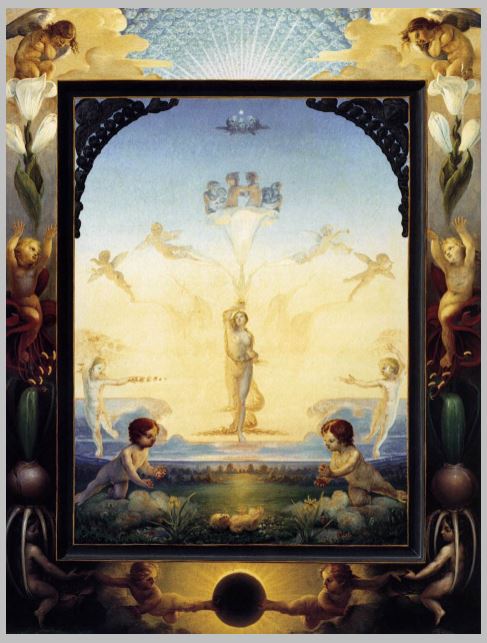Introduction
The small morning art piece was created by Phillip Otto Runge in 1808, using the Romanticism style. In the 19th Century German mystical Jacob Boehme, Runge believed that flowers might symbolize diverse human states. He described that their cycle from budding to death, and response to light, expresses God’s purpose on the world. Flowers have the most natural forms revealing to humanity on the nature of life (“Philipp Otto Runge,” n.d.). Runge also incorporated small children and musical instruments to inspire most of his works on the themes of the romantic era. The piece was purposed to take four massive oil paintings and display them in a Gothic Chapel to the music choir and poetry done by his friend writer Ludwig Tieck. Somehow, this paint represents an ultimate statement on the character of mysticism related to the Romantic Movement, which also symbolizes a masterpiece of the artist’s short life. In the artwork, Runge managed to integrate his research into color theory.

Attraction to the Piece of Art
The art piece is attractive since it features children posing in different styles on the right and left side of the paint; the children seem to be waving at each other. While on the top end, two-winged children could be symbolizing angels, watching over the other figures in the paint. The downside is even impressive as it has four children, two kicking a round object that resembles sunset or darkened sun. They are supported by the other two, holding their arms firmly. The middle part has an adult figure of a woman, with flying children surrounding, and on the lower part, two children are staring at a newborn baby, which seems to amuse them. The painting has merged heavenly beings with humans, nature comprising bright light, darkened areas on the sides, and botanic life full of flowers and plants.
Interesting Fact about This Piece of Art
There is a depicting of the terrestrial regeneration place inside a transcendental setting of an external cosmic feature. The paintwork has a woman in the middle, whereby there is a gigantic lily above her, floating and being embraced by children. The genii and angles are in attendance which is a definition of envisioned divine power. The morning star is releasing out life-giving light that is usually manifested at dawn. Moreover, the entire scenery is encompassed by symbolic flowers and frames of children climbing from an eclipsed sun toward the divine light. The painting shows the artist’s devotion to his Christianity religion and the combination of color and trusting of a child’s soul.
Romantic Characteristics How They are Portrayed in the Painting
Romanticism is emphasized in this painting by integration of individualism, subjective, irrational and imaginative character. Furthermore, there is a deep appreciation of nature’s beauties, a general acclamation of emotion (“Philipp Otto Runge,” n.d.). More attribution to romanticism is demonstrated through high and self-examination of human personality, mental potentialities, and moods. Like early Nightingale’s lesson, the painting is surrounded by hieroglyphic borders that merge mythological symbolism and Christianity. The art piece also incorporates individual plants minutely dissected as botanical specimens joined into visionary patterns. Runge links the revelatory power of the light in this particular work with the miniature version containing a channel of lovely unadulterated landscape painting.
How the Artistic Features and the Music are Related
Music art is concerned with the merging of instruments or vocal sounds for beauty or emotional expressions. In most cultural standards, melody and rhythm add music harmony to form an emotional countenance. Both simple songs and complex electronic compositions belong to a similar action of music. Ostensibly music is an art that permeates human society, and music is a protean art lending itself as an easy alliance of words and physical movement as experienced in the dance. The Small Morning by Runge has incorporated musical instruments in the art piece to demonstrate the relationship between music and art.
Reference
Philipp Otto Runge, Small Morning (1808) (n.d.). German History in Documents and Images. Web.